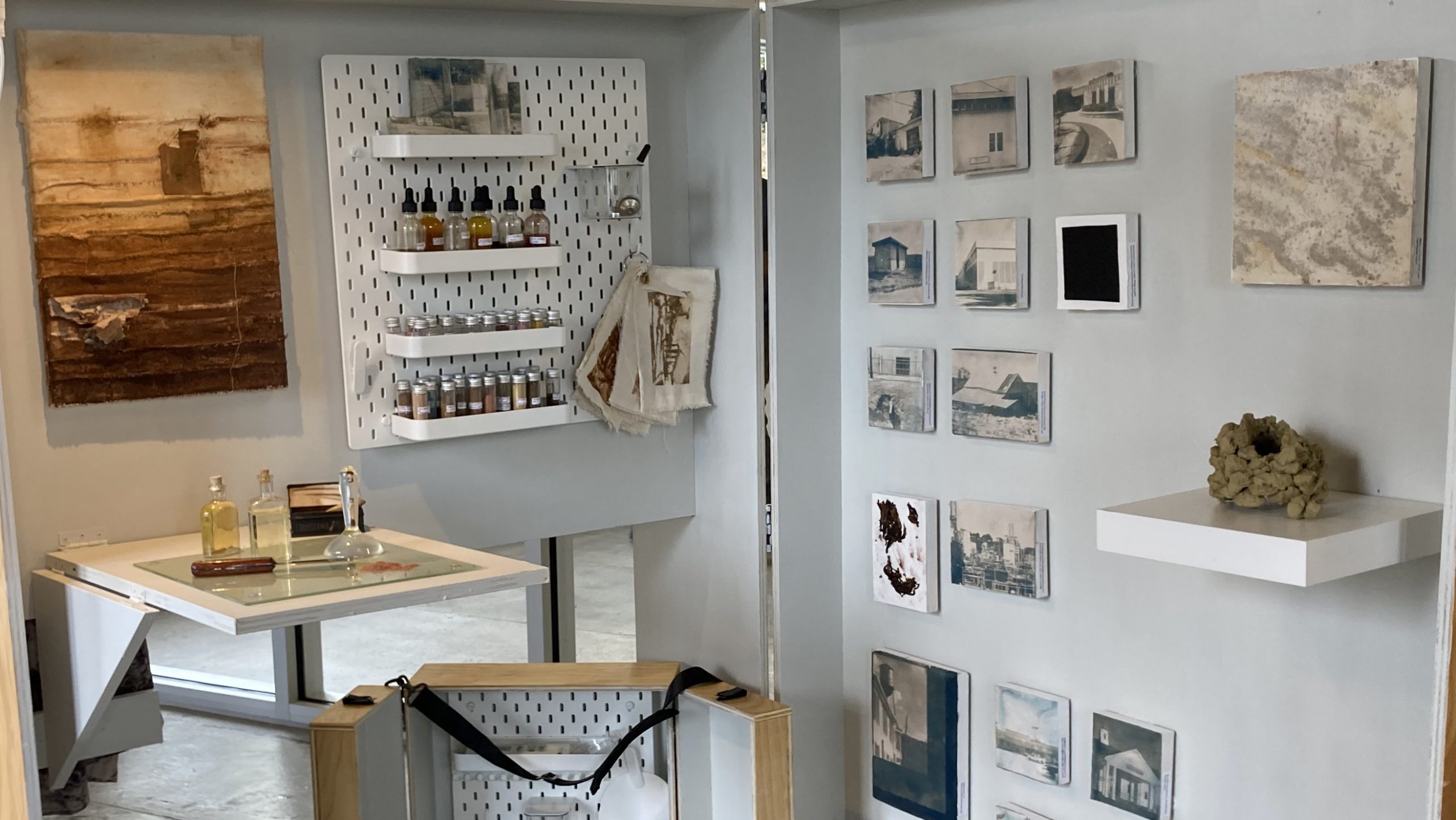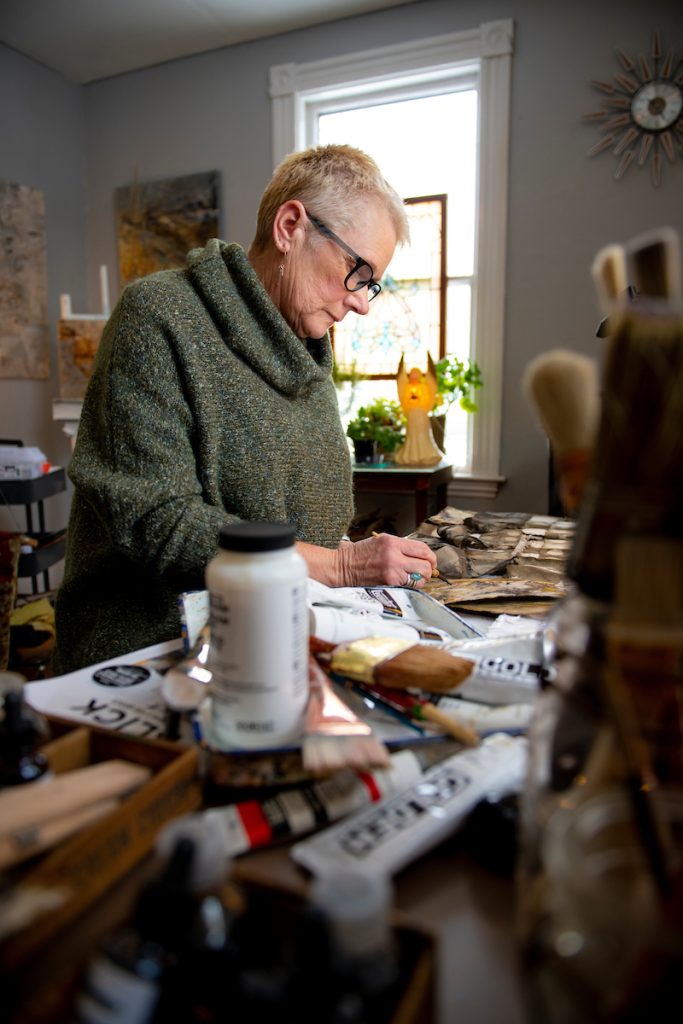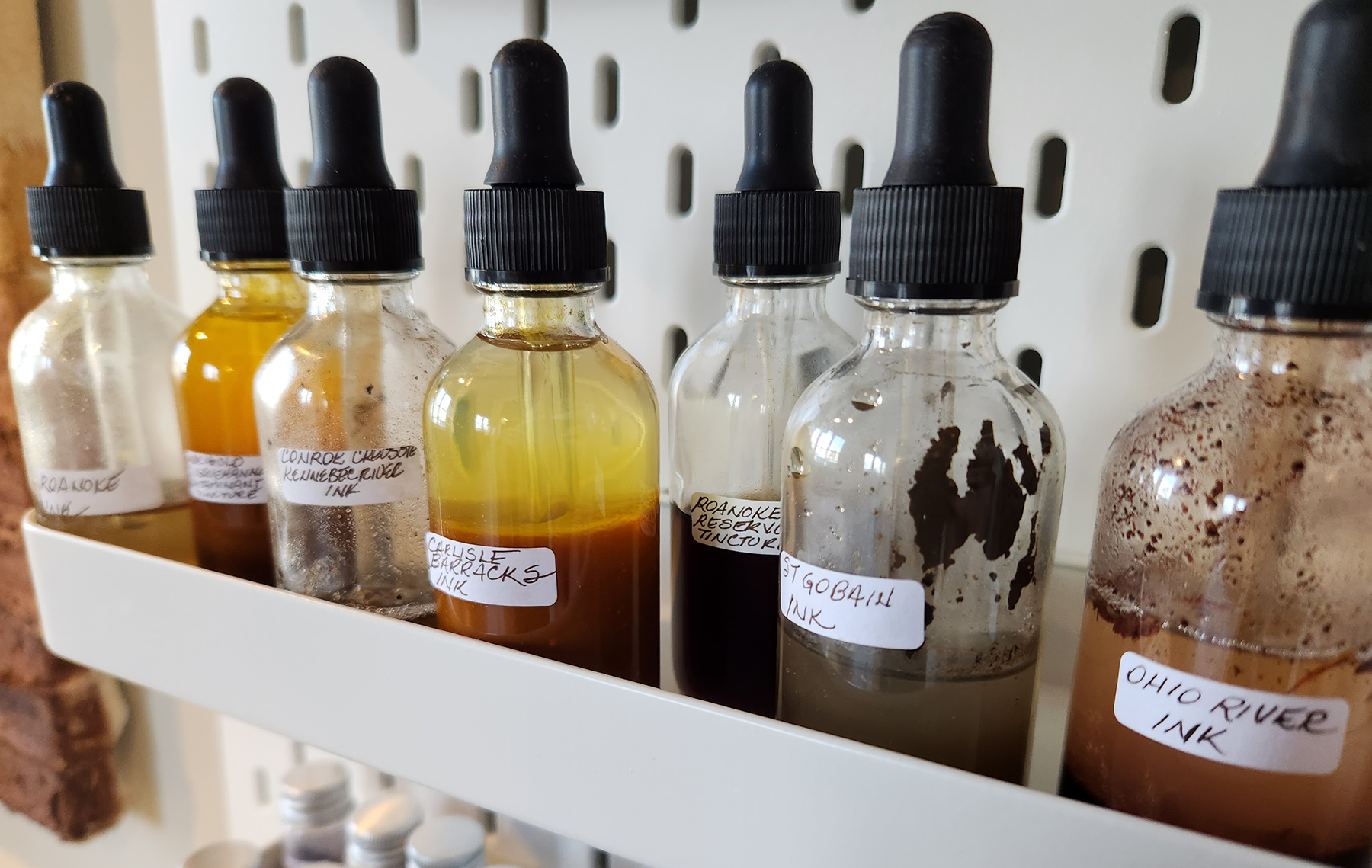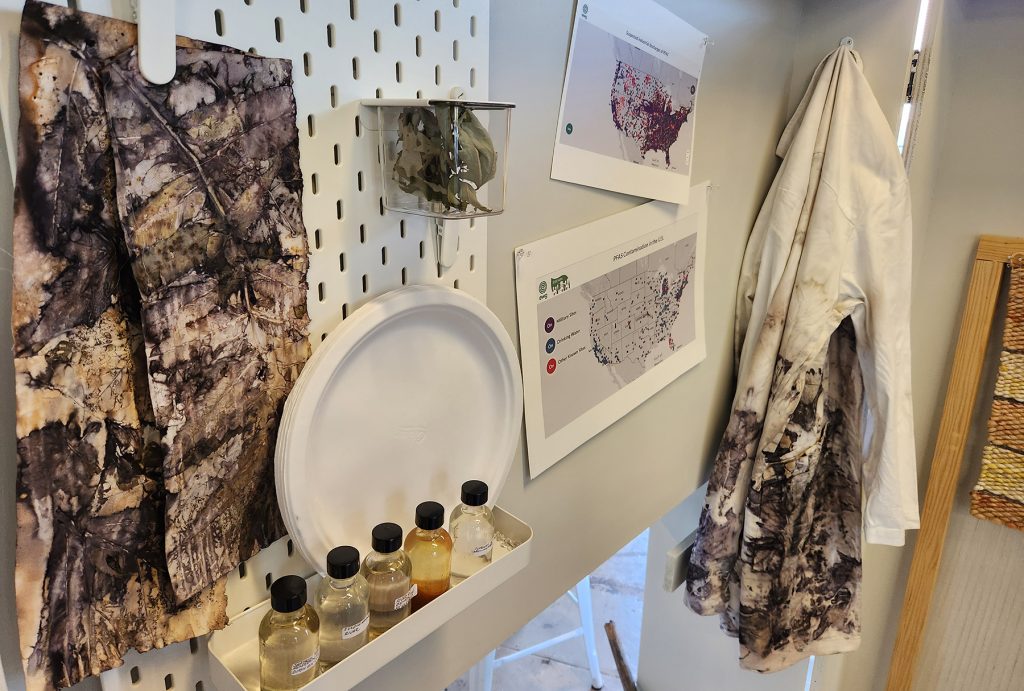
PFAS contamination inspires radical art collaboration
By Hannah Kauffman
At the University of Maine, artists and scientists are teaming up to transform trash into treasured art and pave the way for major strides in PFAS research and community outreach.
Susan Smith firmly believes in the importance of art as a facilitator and interpreter of science, providing an emotional lens through which to see our world. “Art does not exist in a vacuum. What we are making as artists is in relation to whatever is happening around us,” explained Smith, who is an associate research professor who serves as graduate coordinator of UMaine’s Intermedia Program. “Art is a means of communication, and relating what is happening and what could happen to our environment is essential in combating and understanding pressing environmental issues.”

Smith first became aware of per- and poly-fluoroalkyl substances, or PFAS, through the radio during her long commute to UMaine. The chemicals have been used widely in consumer and commercial products for decades, and are linked to a growing number of medical concerns. The chemicals are sturdy, so much so that these “forever chemicals” stick around in water supplies, soils and even our bodies. Scientists are still working to understand the extent of PFAS in the environment and humans, and how its presence influences living organisms.
The burgeoning issue inspired Smith to develop a mobile intermedia exhibition named “Radical Gardening” that explores how PFAS affects land and soil health.
Smith consulted with scientists at the University of Maine Cooperative Extension and Onur Apul, a UMaine professor in civil and environmental engineering who serves on the steering committee for the PFAS+ Initiative, as well as the Maine Farmland Trust, Maine Organic Farmers and Gardeners Association and farmers grappling with contamination on their lands.
“It was kind of like peeling the layers of an onion,” Smith said. “I started to see how PFAS affected everything and that UMaine is one of the premier locations for examining the effects and ways to deal with PFAS in the environment.”
“Radical Gardening” incorporates art pieces, materials, and other items contaminated with forever chemicals. Using tools like the PFAS Sites and Community Resources Map developed by Northeastern University, Smith identified 48 locations; some with the highest known levels of PFAS contamination and a few close to home. She traveled to these locations, going as far as Texas, and collected soil, water, and plant samples–all contaminated with PFAS.

Smith used these samples to make pigments, paints, dyes and solutions for art pieces varying from botanical prints and paintings to textile pieces and photographs. The mobile lab displays photos developed with PFAS-contaminated water, vials of PFAS-contaminated soils, dried and preserved plants and flowers that grew in PFAS-contaminated soils, and fibers colored with PFAS-contaminated dyes. Smith’s “Radical Gardening” holds pieces of art and other stark reminders of the chemical that persists not only in our waters and soils–but our everyday lives.
“The artwork and the interesting mobile lab drew folks in, and then, they became aware of what it was they were actually witnessing. The presence of these chemicals in the art is one thing- then the realization that it is everywhere comes next,” Smith said.
“Radical Gardening” made its debut at UMaine’s Innovative Media Research and Commercialization Center in 2022 before traveling to the New York City Soil and Water Conservation District, where Smith currently co-directs the the Art Extension Service of the Urban Soil Institute. The exhibit returned to UMaine’s Lord Art Gallery for a showing in 2023 that drew environmental clubs, elementary schools and honors students. Event planners and venues interested in hosting “Radical Gardening” are welcome to contact Smith for more information.

Smith’s work on “Radical Gardening” inspired further art and science collaborations over PFAS in her classroom. She and Apul, incorporated a mixture of art and science-based learning into their teaching curriculum. The two groups of students–engineers and artists–collaborated both in the studio and the lab on projects focused on PFAS nanotechnology.
Smith also worked with her art students and researchers at UMaine’s Process Development Center to pioneer use of nanocellulose fibers as a new medium for artists. This project challenged her art students to use the scientific process to their advantage, which provided them with approaches to the physical world and their artistic processes.
Smith is currently working on a performance piece based on soil health, titled Book of Hours, to be exhibited in New York City in July of 2024. This work, sponsored by the UMaine Arts Initiative and the NYC Soil and Water District, uses 100 soil contributions and will produce a book and performance events in Maine and on Governor’s Island in New York City.
“The health of our soil determines the health of our planet, and of all of us,” Smith says.
About the author: Hannah Kauffman is a third-year student at the University of Maine where she is pursuing a degree in marine science and a concentration in marine biology. Hannah is interested in harmful algal bloom species and microbial source tracking in the Gulf of Maine. She works as a science education intern at Maine EPSCoR where she assists with environmental DNA sampling and community outreach. Her interest in communication stems from her experience writing articles for her high school newspaper related to social and environmental issues.
